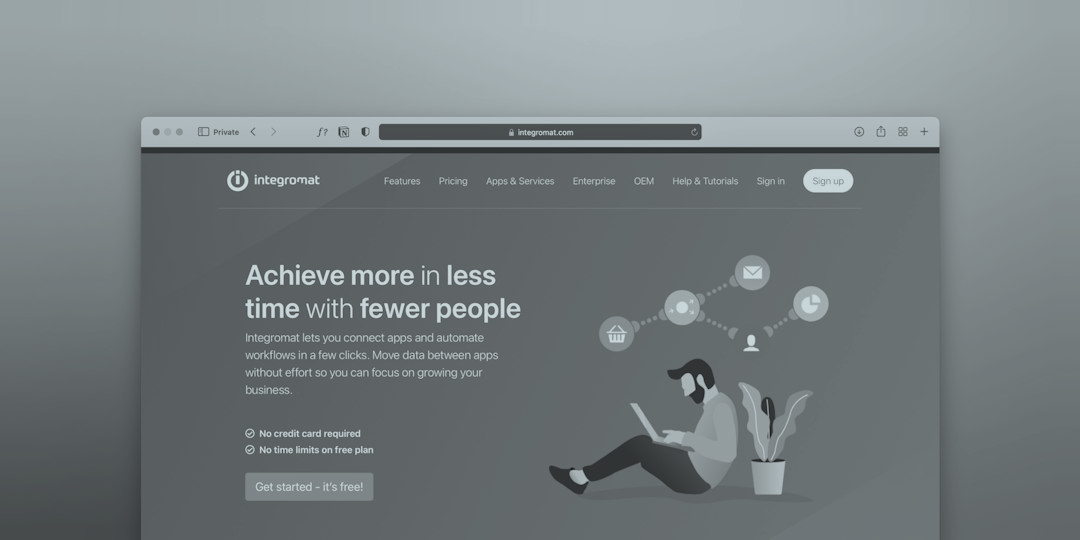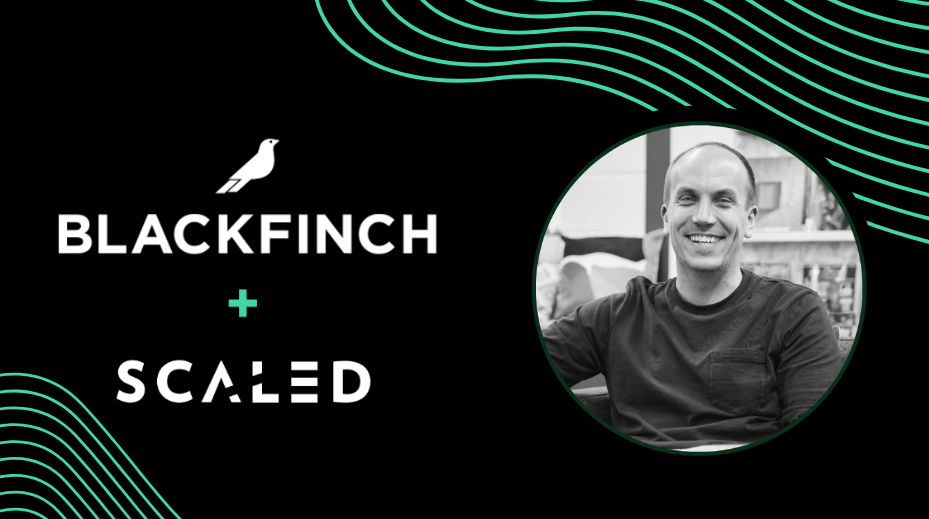Running an agency business is hard.
Growing top line revenue means more people, more marketing, more sales, and more process. It’s a manual toil from which it can feel like there is no escape.
Enter the lightbulb moment that is echoed across most agency businesses once or twice a year:
‘We could build a tool.’
And the truth is you could. But the question that should really be asked is:
‘Should we do that and are we set up to be able to?’
You see, running an agency business is all-consuming. And building a SaaS tool that is truly usable to the masses is an entirely different business model all the way from team structure to sales and marketing approach and cashflow.
In short. It is NOT to be underestimated and can absolutely end up bastardising existing revenues is the project, as it inevitably always does, becomes hugely labour intensive.
But there can be no doubt that there are good reasons to do it. Get it right and you can hugely increase all manner of key metrics and measures such as:
- The overall valuation of your business.
- You cashflow profile and ability to grow retained/recurring revenue.
- Your ability to earn money without adding people and overhead (positive gross margin and operating profit)
- Your pitch win ratio as proprietary tech absolutely creates USP.
And given the fact that your team will have unique insight into your customers’ key pain points you start from a great place too.
Few will have spotted that problem or be in a position to solve it and so that can be an extremely magnetic opportunity.
But you need a plan and below we have distilled down the basic process that you absolutely must follow if you are to launch a SaaS tool to the masses in 2024.
Over the course of this comprehensive guide, we will delve into the intricacies of each phase, providing a detailed, step-by-step process augmented by real-life examples and insightful case studies.
Understanding the Market
Before the wheels of development start turning, a foundational understanding of the market is crucial. Let’s consider the case of Slack, a SaaS product that revolutionized team communication.
Slack’s founders recognized the need for a seamless collaboration tool and conducted extensive market research to identify gaps and opportunities.
By analysing the landscape and understanding user pain points, they developed a product that not only filled a void but became synonymous with efficient team communication.
Defining Your Unique Value Proposition (UVP)
Aligning your SaaS idea with your agency’s unique strengths is paramount.
Consider the journey of HubSpot, a SaaS platform that disrupted the marketing automation space. By aligning their platform with the inbound marketing methodology, HubSpot clearly articulated how their product solved a specific problem for businesses—transforming the way marketing is done.
Your unique value proposition should resonate with your agency’s expertise and provide a compelling solution to a market need.
Assembling the Right Team
The success of any SaaS venture rests on the shoulders of the team behind it. Take, for instance, the story of Atlassian, the creators of Jira and Confluence. A
Atlassian prioritized assembling a team with diverse skills, blending technical prowess with business acumen. This approach ensured they not only developed robust products but also navigated the complexities of scaling a SaaS business successfully.
Choosing the Right Technology Stack
Choosing the right technology stack is akin to selecting the foundation of a skyscraper. Zendesk, a customer service SaaS platform, meticulously evaluated scalability, security, and maintenance requirements during their early development.
By making informed choices, they built a foundation that not only withstood the test of time but also accommodated future integrations and updates seamlessly.
Agile Development Practices
The agile methodology has become synonymous with successful SaaS development.
Take Salesforce, for instance, whose agile approach allowed them to evolve their CRM platform continuously. Embracing iterative development and incorporating user feedback throughout the process enabled Salesforce to stay ahead in the competitive CRM landscape, offering a product that evolves with user needs.
Quality Assurance and Testing
Ensuring a seamless user experience is non-negotiable in the SaaS realm. Consider the case of Zoom, a video conferencing SaaS product that soared to prominence during the remote work boom.
Zoom’s commitment to rigorous testing procedures not only ensured a reliable user experience but also contributed to its widespread adoption as the go-to virtual communication tool.
Revenue Model Shift
The transition from a project-based revenue model to a subscription-based approach is a defining moment for SaaS ventures.
Look at Adobe, a software giant that successfully shifted from selling boxed software to a subscription-based model with Adobe Creative Cloud. While navigating cash flow challenges, Adobe created a sustainable revenue stream that allowed for continuous product improvement and innovation.
Customer Relationship
Building long-term partnerships is intrinsic to SaaS success. Consider the journey of Shopify, an e-commerce SaaS platform.
By moving from project-based relationships to fostering ongoing partnerships with businesses, Shopify not only provided a platform for e-commerce but also became a strategic ally for its users, offering continuous support and updates.
Product Focus vs. Project Focus
Shifting from a project-focused mindset to one centred around continuous product enhancement is a fundamental transformation.
Salesforce, with its consistent updates and feature releases, exemplifies the shift from completing projects to nurturing products. Balancing innovation with customer satisfaction ensures your product remains relevant and competitive over the long term.
Early Adoption Strategies
The journey to market involves identifying and captivating early adopters.
Take the case of Dropbox, a cloud storage SaaS product. Dropbox strategically employed early adoption strategies by offering exclusive incentives such as increased storage space for referrals.
This not only attracted early users but also fuelled organic growth, creating a solid user base from the outset.
Pricing Strategy
Pricing strategies play a pivotal role in the success of a SaaS product. Consider the journey of Slack, which implemented a freemium model to entice users.
This strategy allowed Slack to gain traction by offering basic services for free while enticing users to upgrade for premium features. Setting competitive and scalable pricing is a delicate balance that can significantly impact user acquisition and revenue generation.
Content Marketing
Content is the linchpin of successful SaaS marketing. Look at the content marketing strategy of Mailchimp, an email marketing SaaS platform.
Mailchimp creates valuable content that not only showcases their expertise in email marketing but also provides actionable insights for users.
By leveraging content for SEO and establishing thought leadership, Mailchimp has positioned itself as a go-to resource in the email marketing landscape.
Social Media Engagement
Building a strong social media presence is imperative for SaaS success.
The story of Buffer, a social media management SaaS product, is a testament to the power of social media engagement. Buffer not only built a presence on relevant platforms but actively engaged with its audience, fostering a community around its brand. By understanding and resonating with its users, Buffer achieved organic growth and loyalty.
Scaling Infrastructure
Scaling a SaaS business requires meticulous planning and execution. Netflix, a streaming SaaS giant, exemplifies the importance of scaling infrastructure.
As user demands soared, Netflix proactively prepared by investing in robust server capacity and implementing load balancing. This foresight not only ensured a seamless user experience but also positioned Netflix as a global leader in streaming services.
Iterative Development and Updates
Continuous improvement is the heartbeat of successful SaaS ventures. Consider the journey of WordPress, a content management SaaS platform.
WordPress continuously improves its product based on user feedback, implementing regular updates and feature releases. By staying agile and responsive, WordPress not only retains its user base but also adapts to the evolving needs of the digital landscape.
Invest in Customer Support:
Establish a robust customer support system, including FAQs and chat support. Actively seek and respond to user feedback to continuously improve support processes.
Implement Analytics and Monitoring:
Utilize tools like Google Analytics, Mixpanel, or Hotjar to track user behaviour. Set up server and application monitoring to identify and address issues proactively.
Collaborate with Influencers:
Identify and collaborate with influencers in your industry. Offer them early access to your product and encourage them to share their experiences with their audience.
Continuous Improvement:
Establish a regular release cycle for updates and improvements. Encourage users to provide feedback and prioritize feature requests based on demand.
Scale Smartly:
Plan for scalability in terms of both infrastructure and team. Monitor server loads and user activity to anticipate scaling needs.
Remember, flexibility is key during a SaaS product launch. Adapt your strategies based on real-time feedback and market dynamics to ensure long-term success. Good luck on your SaaS journey!




